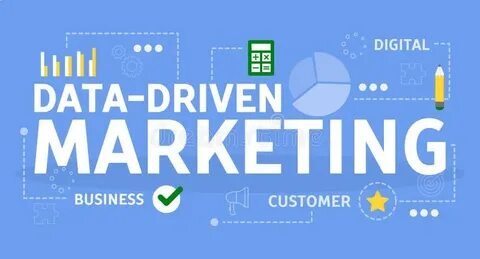In today’s competitive e-commerce landscape, gut feeling is no longer a strategy. If you want to build a successful online store, you need a marketing approach rooted in data. A data-driven marketing strategy empowers you to understand your customers better, optimize every touchpoint, and invest your resources where they actually matter.
Whether you run a Shopify store, a wellness brand on Instagram, or a beauty product line growing through Facebook, adopting a data-first mindset is essential in 2025 and beyond.
In this Article, we’ll break down what a data-driven marketing strategy means, why it’s important, and how you can implement it step-by-step for real, scalable growth.
Why a Data-Driven Approach Matters in E-commerce
Every click, scroll, add-to-cart, and purchase on your store is valuable data. When you analyze it correctly, it tells you:
- Who your customers are
- What they want
- How they found you
- What made them convert (or not)
A data-driven marketing strategy removes the guesswork. It helps you make smart decisions about product offerings, ad spend, content creation, email marketing, and even inventory.
Plus, in 2025, customers expect personalized experiences. Data is how you deliver them.
Step 1: Define Clear Business Goals
Before diving into analytics or tools, start by defining what success looks like.
Are you aiming to:
- Increase monthly sales by 25%?
- Lower customer acquisition cost (CAC)?
- Grow email subscribers to 10K?
- Boost repeat purchase rate?
These goals will guide which data points and marketing channels matter most.
🧠 Tip:
Use SMART goals (Specific, Measurable, Achievable, Relevant, Time-bound) to track progress and make data actionable.
Step 2: Identify Your Key Metrics (KPIs)
Once your goals are set, define the Key Performance Indicators (KPIs) that support them. These metrics act as your marketing compass.
Examples of critical e-commerce KPIs:
- Conversion Rate (CR)
- Customer Acquisition Cost (CAC)
- Customer Lifetime Value (CLV)
- Average Order Value (AOV)
- Cart Abandonment Rate
- Email Open and Click Rates
- Return on Ad Spend (ROAS)
- Traffic Sources (Organic, Paid, Referral)
Pro Tip:
Don’t track everything—track what aligns with your goals. Vanity metrics (like likes or followers) are less important than actual revenue drivers.
Step 3: Set Up the Right Tools
To collect and analyze data, you need the right tech stack. Here are some essential tools:
Google Analytics 4
→ Track traffic sources, behavior flow, bounce rate, conversions
Meta Pixel (Facebook Ads)
→ Understand ad performance, retargeting, custom audiences
Shopify Analytics
→ Sales, customer journey, product performance, repeat rate
Klaviyo / Mailchimp
→ Email metrics, list growth, automation performance
Hotjar / Microsoft Clarity
→ Heatmaps, session recordings to see how users interact with your site
SEO Tools (Uber suggest, SEMrush, Google Search Console)
→ Keyword rankings, organic traffic growth
💡 Bonus:
Centralize your insights using a dashboard (like Google Looker Studio or Triple Whale).
Step 4: Segment Your Audience Like a Pro
All customers are not created equal. Data-driven brands understand this and personalize accordingly.
Audience segmentation examples:
- First-time vs. returning customers
- High spenders vs. low spenders
- Email subscribers vs. non-subscribers
- Abandoned checkout users
- Source-specific users (IG vs. SEO vs. Ads)
🎯 Use this segmentation in your ad targeting, email campaigns, product offers, and content strategy.
🧠 Real-World Example:
If you notice returning customers often buy bundles, create a special bundle email just for them.
Step 5: Build Campaigns Based on Data
Here’s where strategy meets execution. Using your segmented audiences and metrics, build intentional campaigns.
Ad Campaigns:
Use data to identify high-performing products, customer demographics, and behaviors. Run retargeting ads for cart abandoners or lookalike audiences based on high LTV customers.
Email Campaigns:
Send personalized offers based on browsing history, purchase behavior, or seasonal interest. Automate flows like welcome series, post-purchase follow-ups, and win-back sequences.
Content Marketing:
Analyze what blog topics bring traffic. Repurpose your best-performing content into Reels, carousels, and infographics.
Product Launches:
Use data from surveys, product page visits, and wishlist behavior to decide what to launch next.
🧠 Remember:
Data isn’t just about numbers—it’s about understanding people.
Step 6: Test, Analyze, and Optimize
One of the biggest advantages of a data-driven approach? You can test, tweak, and grow continuously.
Run A/B tests on:
- Product page layouts
- Email subject lines
- Ad creatives
- CTA buttons
- Pricing options
Track the results over time and double down on what works.
📊 Example:
You might find that a “limited time” CTA increases your conversion rate by 20%. That insight can shape your entire next campaign.
Step 7: Monitor and Adapt to Trends
E-commerce is fast-paced. What worked in Q1 might not work in Q3. Stay updated with:
- Platform algorithm changes (Meta, Google, TikTok)
- Consumer behavior trends (short-form video, voice search)
- New tools (AI copy, visual search, automation workflows)
Set monthly or quarterly reviews to adjust your strategy based on the latest data and trends.
🧠 Tip:
Subscribe to newsletters like Saazads, Marketing Brew, or DTC Newsletter to stay ahead of the curve.
Conclusion: From Guesswork to Growth
A data-driven marketing strategy isn’t just a buzzword—it’s your roadmap to building a profitable, scalable, and customer-centric online store in 2025.
It helps you:
- Make smarter decisions
- Personalize the shopping experience
- Reduce wasteful spending
- Grow with confidence



Leave A Comment